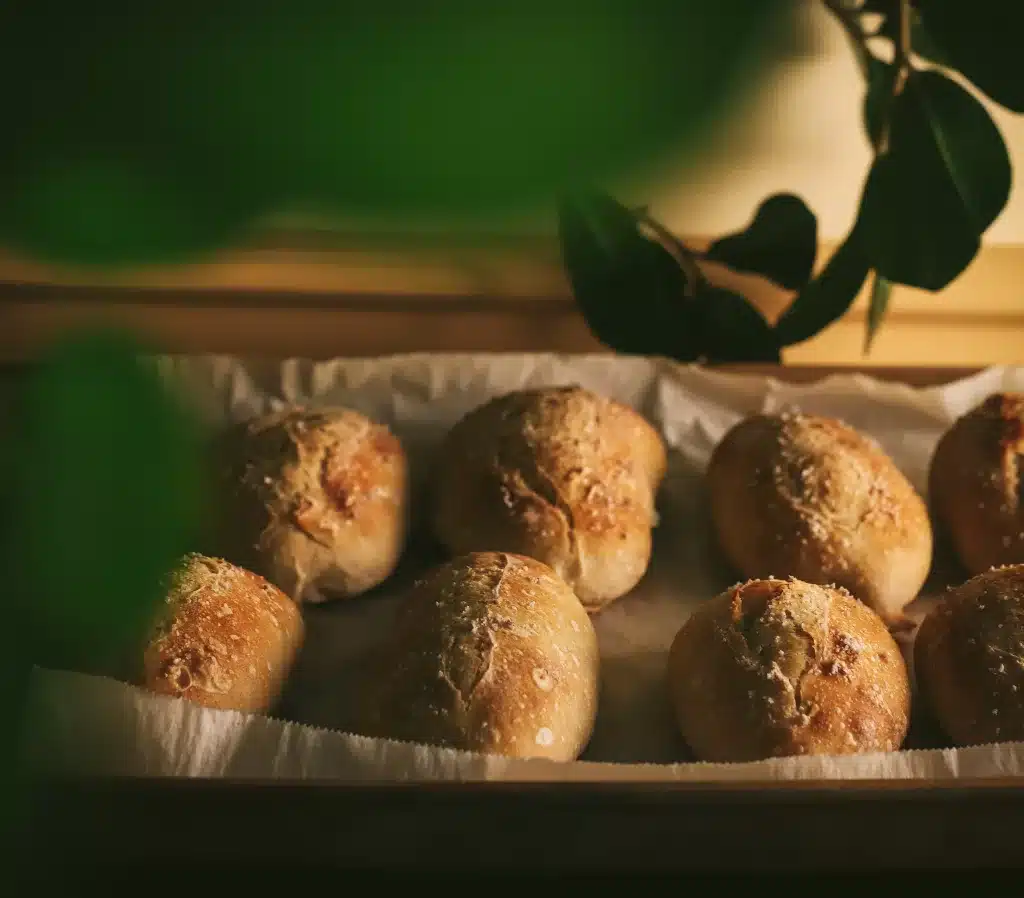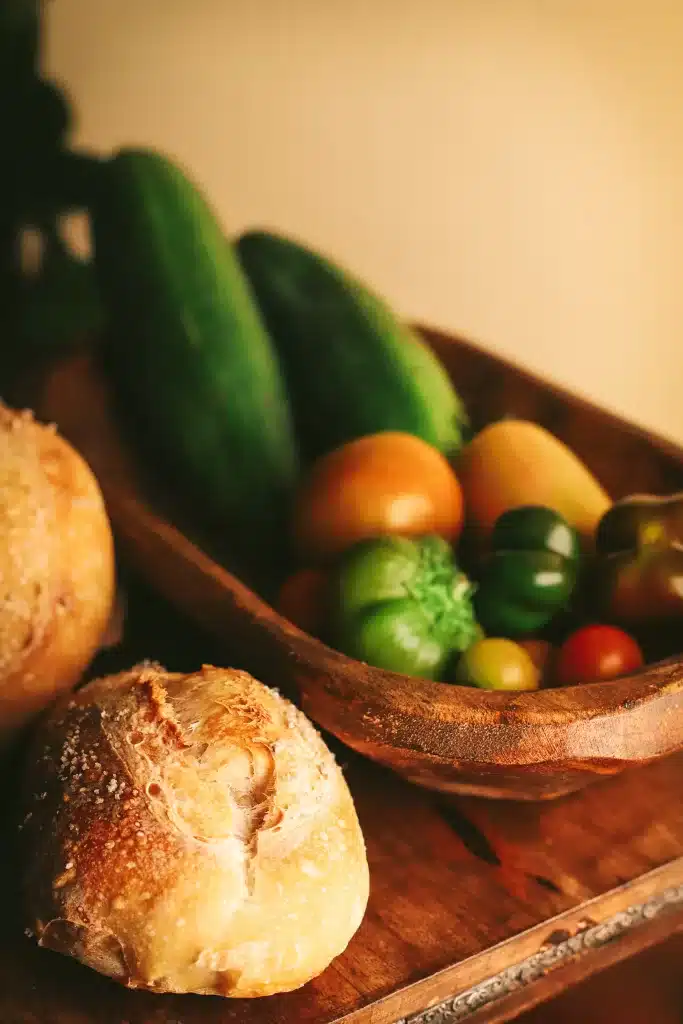
At its core, an ancestral diet is eating as our ancestors did. It sounds so simple and obvious, but this way of eating is not common among most Americans who have vast access to premade foods and take out. You might be thinking, “I don’t eat fast food or drink sodas” but unless you are very intentional about what you buy from the store, you might not be eating an ancestral diet either.
A few years ago before I dove into this way of eating, I thought I was eating “healthy”. However, once I analyzed what I was actually consuming, I found an array of store-bought sweets, industrialized oils, and processed convenience foods in my kitchen. Little did I know, these foods were undermining all the progress I was making in the gym and the benefits of the homemade foods I was making. Of course, I am still on this journey to embrace an ancestral diet and I definitely occasionally consume store-bought ice cream (not for long though because I just got an ice cream maker) or Chick Fil A, but my consumption of these processed foods has greatly decreased and I am starting to crave them less.
What is an ancestral diet?
All of our ancestors are from different places which means that the specific foods they consumed will vary greatly. For example, if you are from a coastal region, ancestors in that area consumed a large amount of fresh, wild-caught seafood. If you are from a region of jungle or rainforest, ancestors there would be eating an abundance of tropical fruits and vegetables. But what do all ancestral diets have in common regardless of region?
- Whole foods
- Non-industrialized
- Non-GMO
- Meats, dairy, fruits, vegetables
- Fermented grains and vegetables
- Whole raw dairy
- High in animal fats
- Organ meats
The main thing all these foods have in common is that they are whole, non-processed foods.
What foods are included in an ancestral diet?
Many delicious foods can be found in an ancestral diet including:
- Animal fats such as butter, tallow, and lard
- Grass-fed and finished meat
- Pastured eggs
- Unrefined oils (coconut, olive, and avocado)
- Wild, local fish and seafood
- Local and seasonal vegetables and fruits
- Fermented breads
- Sprouted and soaked grains and legumes
- Fermented vegetables
- Ancient grains
What foods are not included in an ancestral diet?
Most of the food you will find in the aisles of the grocery store is not included in this way of eating. This includes:
- Industrialized vegetable and seed oils: (canola, grapeseed, safflower, and soybean are some of the most common ones)
- Factory farmed meat
- Highly processed vegan foods such as store-bought nut milks and fake meats
- Artificial sweeteners
- Artificial flavors
- Pasteurized, homogenized dairy
- Most snack and convenience foods
- Most premade or frozen meals
- Highly processed grains and bread
The one thing most of these foods have in common is that they are usually processed foods found in your local grocery store. Yes, buying a $1 baguette at your local supermarket is very convenient, but if you take a look at the ingredients found in that bread, you will likely find bleached processed flour, refined oils, artificial sugars, and more.


Seasonal and Local Eating
While I have written several blogs about eating seasonally and locally, I wanted to speak about it again within the context of the ancestral diet. Seasonal and local foods are perhaps the least discussed but one of the most important aspects of ancestral eating because our ancestors did not have a modern industrial food system. They would eat the foods they or someone else grew locally. Because their food was grown locally, it had to be in season. This way of eating is less expensive, better for the planet, and better for our bodies. You can learn more and read my in-depth blog about it here.
What are the pros and cons of eating an ancestral diet?
Pros
- Less processed food and oils reduce inflammation and have more nutrients that are better absorbed and utilized by the body.
- Eating seasonally is much less expensive
- Organic, locally-grown produce has a higher nutrition profile
- An ancestral diet encourages consumers to know what is in their food and where it comes from
- Fats like butter and raw dairy are so delicious to enjoy
- Buying ingredients is less expensive than premade processed foods
- Buying ingredients in bulk to make food at home is a better value for quality
- Increased quality of life from eating whole foods: better sleep, less anxiety, increased muscle, and bone density, reduced chronic disease, and so much more!
Cons
- The greatest con of the ancestral diet is convenience. If you are wanting an easy “diet” that takes little to no thought, this is not the one for you.
- You will need to sacrifice either money or time. If you want to enjoy organic, whole, unprocessed food you are going to need to spend a lot of money to source it or take the you will need to take the time to make it yourself. This con can easily turn into a pro if you are like me and love learning new skills and do not mind sacrificing free time to make food from scratch.
- An ancestral diet can become expensive IF you are not savvy about how you source and make food. If you do not shop for sales, if you buy expensive online foods, if you buy produce out of season, and if you do not make most of your food from scratch, this way of eating will be very expensive.

What benefits have I noticed from eating an ancestral diet?
I have noticed countless benefits including:
- Balanced hormones and cycles
- Thick, luscious, fast-growing hair and nails
- More sustained energy throughout the day
- Feeling fuller for longer
- No longer craving processed snacks and sweets
- More satisfaction from my meals
- Healthy maintained weight
After trying this way of eating for more than a year, would I recommend it?
Yes, I would highly recommend eating an ancestral diet. I have felt the best in my life eating this way and do not intend to stop! I do occasionally eat out or enjoy a meal at someone’s house where I cannot control the ingredients and don’t worry about it! The 80:20 rule is what works best for me. This means I try to eat whole, from scratch, unprocessed food 80% of the time, and 20% of the time I don’t. So if someone serves me dinner, I eat it and if something looks really delicious at a restaurant, I indulge! I love this way of eating because it is not a strict “diet” and provides me with lots of flexibility and creativity with my food.
I wanted to take a moment to express how much I appreciated going
through this article! You’ve shared such valuable and relevant information, especially for those of us who are dedicated about
taking care of our health. It’s always refreshing to find content that not only informs but also motivates better choices in such an clear
way. I’m definitely coming back to this and will be linking to your article on my
site about nutrition and healthy living. Keep up the great work – your content is helping people!